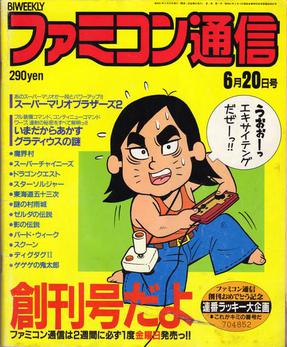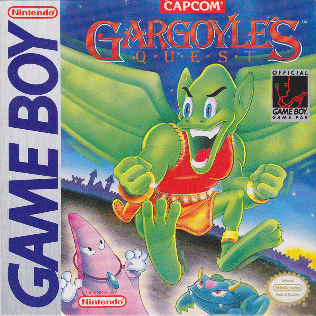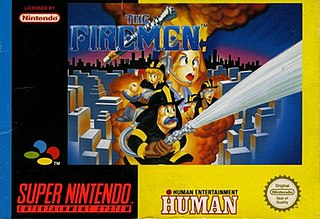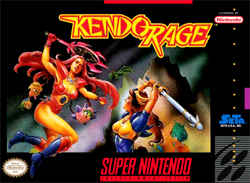
Super Street Fighter II: The New Challengers is a competitive fighting game produced by Capcom and originally released as an arcade game in 1993. It is the fourth game in the Street Fighter II sub-series of Street Fighter games, following Street Fighter II: Hyper Fighting. It refines and balances the existing character roster from the previous versions, and introduces four new characters. It is the first game on Capcom's CP System II hardware, with more sophisticated graphics and audio over the original CP System hardware used in previous versions of Street Fighter II.

Ghosts 'n Goblins, known as Makaimura in Japan, is a platform video game developed by Capcom and released for arcades in 1985. It is the first game in the Ghosts 'n Goblins franchise, and has since been ported to numerous home platforms.

Famitsu, formerly Famicom Tsūshin, is a line of Japanese video game magazines published by Kadokawa Game Linkage, a subsidiary of Kadokawa. Famitsu is published in both weekly and monthly formats as well as in the form of special topical issues devoted to only one console, video game company, or other theme. Shūkan Famitsū, the original Famitsu publication, is considered the most widely read and respected video game news magazine in Japan. From October 28, 2011, the company began releasing the digital version of the magazine exclusively on BookWalker weekly.

Assault Suits Valken, also known as Cybernator, is a 2D mecha action game developed by Masaya and released in 1992 for the Super Nintendo Entertainment System. The second entry in the Assault Suit series, it is a prequel to the first game, Target Earth. The game was localized and published overseas by Konami. The story follows Jake Brain who pilots a giant mecha and fights in a war engulfing the entire world.

Treasure Hunter G is 1996 a turn-based tactical role-playing game developed by Sting Entertainment and published by Square exclusively for the Super Famicom, and in Japan.

Super Ghouls 'n Ghosts, known as Chou Makaimura in Japan, is a platform video game developed and published by Capcom for the Super Nintendo Entertainment System in 1991. As the third game in the Ghosts 'n Goblins series and the first not to be released for the arcade, it again depicts knight Arthur saving Princess Guinevere and the kingdom from Emperor Sardius, who has cast a spell that has revived the Ghoul Realm.

Gargoyle's Quest is an action-adventure platform game developed by Capcom for the Game Boy and released in 1990. It is a spin-off of the Ghosts 'n Goblins series, featuring the series antagonist character Firebrand as the main playable character. Gargoyle's Quest was followed by the NES prequel Gargoyle's Quest II in 1992 and the Super NES sequel Demon's Crest in 1994.

Gargoyle's Quest II: The Demon Darkness is a 1992 action-adventure game released on the NES by Capcom. It is the prequel to Gargoyle's Quest and features a similar gameplay style, which combines adventure elements with side-scrolling action in a macabre fantasy setting.
eBaseball Powerful Pro Baseball, previously known as Jikkyō Powerful Pro Yakyū and marketed internationally as Power Pros, is a Japanese baseball video game series created by Konami. The game is known for its super deformed characters, and fast-paced but deep game play. Most games in the series are developed under license from the Nippon Professional Baseball (NPB) and the Japan Professional Baseball Players Association (JPBPA), letting them use the league's team names, stadiums, colors, and players' names and likenesses. There are also six games in the series with the Major League Baseball (MLB) and Major League Baseball Players Association (MLBPA) license, two with the Korea Baseball Organization (KBO) and Korea Professional Baseball Players Association (KPBPA), and one with the World Baseball Classic license. It is long running in Japan, starting out in 1994 for the Super Famicom, and appearing on many different consoles: Saturn (1995–1997), PlayStation (1994–2003), Nintendo 64 (1997–2001), PlayStation 2 (2000–2009), Dreamcast (2000), GameCube (2002–2006), Wii (2007–2009), PlayStation 3 (2010–2016), PlayStation 4 as well as PlayStation Portable (2007–2013) and Vita (2012-2018).
Assault Suit, also known as Assault Suits, is a series of futuristic robotic war video games developed by NCS featuring soldiers manning the eponymous gigantic humanoid mecha. Spanning the course of 15 years and beyond, the games would be cross-distributed, cross-published and developed between the U.S. and Japan. It would be known as one of the most challenging series to follow due to the drastic changes from game to game.

Pop'n TwinBee: Rainbow Bell Adventures is a side-scrolling platform game published and developed by Konami for the Super Nintendo Entertainment System. The game was originally released in Japan on 7 January 1994. Rainbow Bell Adventures is the first platformer in the TwinBee series, departuring from the vertically scrolling shooter genre.

The Firemen is an action video game developed and published by Human Entertainment for the Super Nintendo Entertainment System. It was first released in Japan in 1994, and then in Europe and Australia in 1995. In The Firemen, the player controls firemen who fight fires and save civilians. A sequel was released for the PlayStation in 1995 titled The Firemen 2: Pete & Danny.

Bomberman 64 is a Japanese Nintendo 64 game of the Bomberman franchise.

Wild Guns is a 1994 space Western shooting gallery video game developed by Natsume for the Super Nintendo Entertainment System. Set in the Wild West with steampunk and sci-fi influences, the story follows Annie and her bounty hunter Clint, seeking revenge for the death of her family. The player controls either Annie or Clint sidestepping and jumping in the foreground while shooting down enemy robots in the background and dodging enemy bullets. These gameplay mechanics combine elements from third-person shooters and light gun games.

Kendo Rage, known in Japan as Makeruna! Makendō, is an action video game for the Super Nintendo Entertainment System/Super Famicom by Datam Polystar. SETA published the English version.

Ghosts 'n Goblins, known in Japan as Makaimura, is a run-and-gun platform video game series created by Tokuro Fujiwara and developed by Capcom. The first entry in the series was Ghosts 'n Goblins, released in arcades on July 7, 1985. The series has subsequently been ported to and released on a variety of personal computers, game consoles and mobile platforms and spawned several sequels and spin-offs.

Maldita Castilla, known in North America and PAL regions as Cursed Castilla, is a platform game developed by Locomalito and released in December 2012. The game is primarily based on myths from Spain, European folklore, and cavalry novels. Maldita Castilla was developed as a tribute to Ghosts'n Goblins.

Tetris 2, known in Japan as Tetris Flash, is a puzzle video game developed by Nintendo and Tose and published by Nintendo for the Nintendo Entertainment System. It was ported to the Game Boy in 1993 and Super Nintendo Entertainment System in 1994 by Bullet Proof Software.

The gargoyle is a fantasy and horror monster inspired by the gargoyle architectural element. While they were believed in mythology to frighten away evil spirits, the idea of such statues physically coming to life is a more recent notion. Like golems, they are usually made of magically animated or transformed stone, but have animal or chimera traits and are often guardians of a place such as a cathedral or castle. They can also be depicted as vessels for demonic possession or as a living species resembling statues.

White Cat Project is a free-to-play action role-playing game developed and published by Colopl for Android and iOS. It was initially released in Japan on July 14, 2014. An English version was released internationally under the title Colopl Rune Story and operated from July 23, 2015, to October 7, 2016. A spinoff title, White Cat Tennis was released on both iOS and Android on July 31, 2016, while the upcoming sequel Shironeko New Project will be released on the Nintendo Switch at a later date.



















